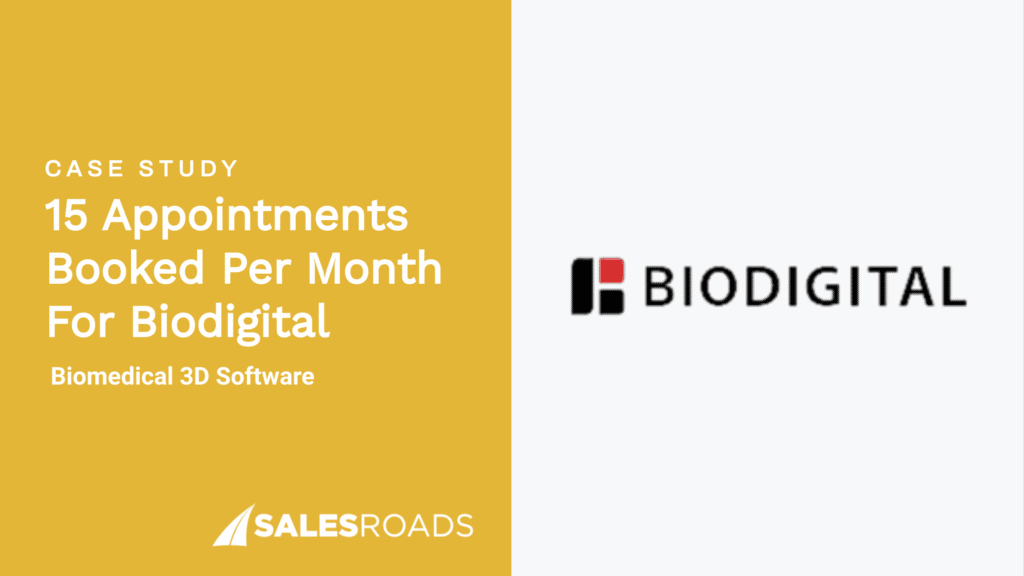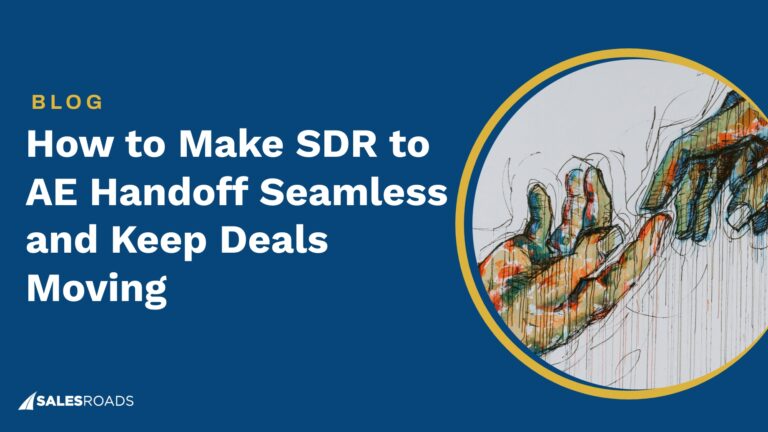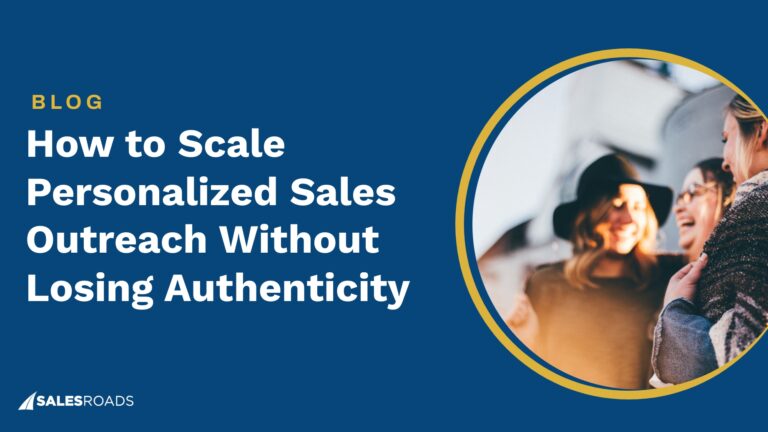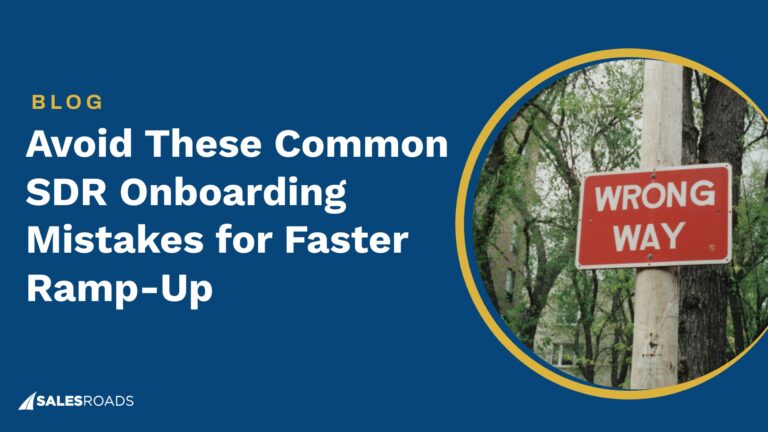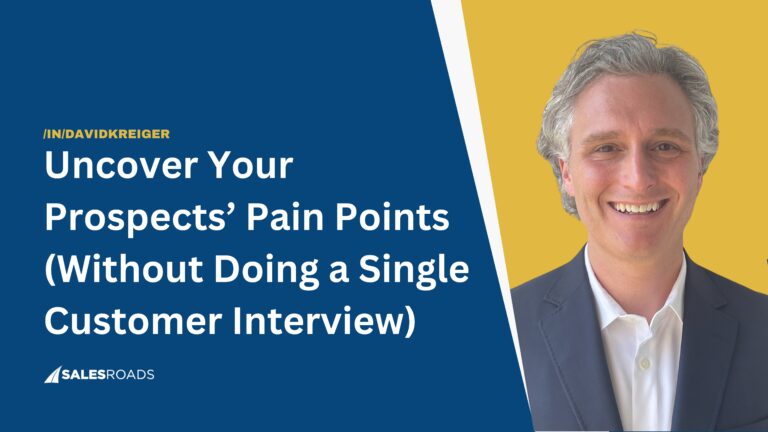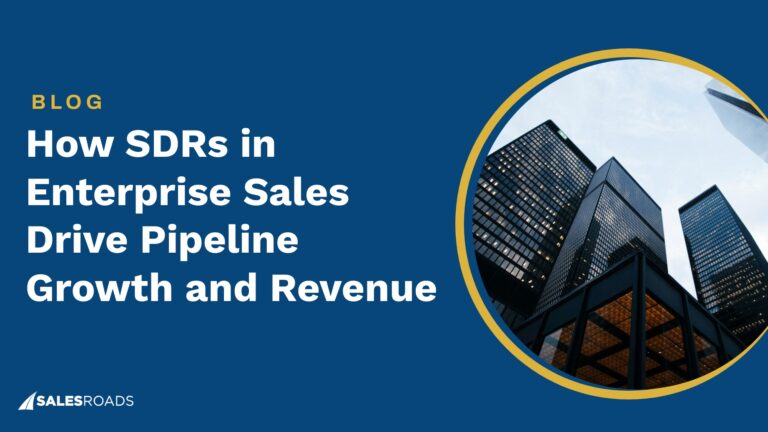Most teams stumble when it comes to scaling personalization across hundreds or even thousands of prospects. They either lean too heavily on automation and lose authenticity, or they waste hours writing one-off messages that never add up to a pipeline.
But personalized sales outreach isn’t about gimmicks or mail merge tricks. It’s about showing buyers you understand their world and can speak to what matters most, without sounding like a bot.
You need the right systems, data, and frameworks to pull that off at scale.
Why Personalization at Scale Fails Without an Authentic Foundation
Sales teams often confuse personalization with customization.
Most teams treat personalization like a cosmetic tweak instead of a structural change. They layer tokens and surface facts on top of the same generic pitch and call it “personalization,” then wonder why response rates stay flat.
The data backs this up: the average cold email reply rate sits at just 8.5%, and highly personalized campaigns can achieve as high as 40%.
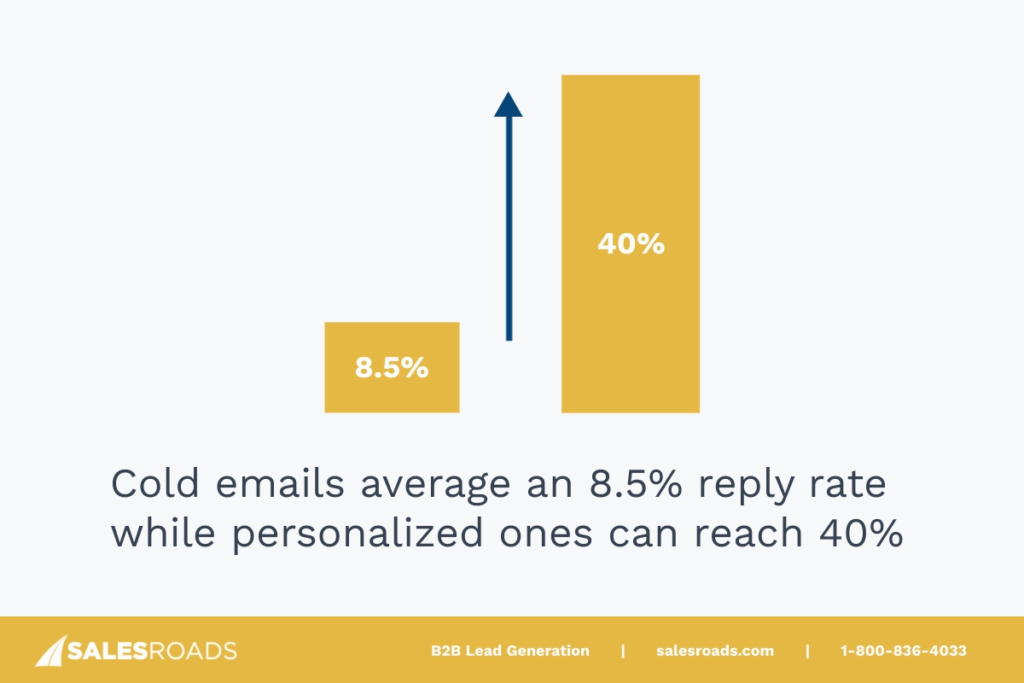
What Authentic Personalization Really Means
Authentic personalization isn’t just sprinkling in a prospect’s first name or mentioning their company. It’s about proving you’ve done your homework and understand their challenges, priorities, and goals.
Prospects can smell generic outreach from a mile away today. Authenticity requires grounding your message in real insight: industry shifts, role-specific pain points, or recent company news that actually matters to the buyer.
When personalization is authentic, it feels like a one-to-one conversation even if the foundation comes from repeatable research and scalable systems.
Going Beyond “Hi {First Name}”: Avoiding Superficial Tactics
The biggest trap SDRs fall into is stopping at surface-level personalization. Dropping in “Hi {First Name}” or mentioning the city someone is based in isn’t personalization; it’s filler.
Buyers don’t engage because they see through it. What they want is relevance: a perspective on how you can help solve their real problems.
For example, a VP of Sales doesn’t care that you saw they went to a certain university. They care that you know their team is missing quota because their reps spend 40% of their time on manual prospecting.
Superficial personalization erodes trust, while meaningful personalization builds credibility. The difference comes down to whether you connect the dots between who they are and why your outreach matters to them right now.
Personalization vs. Relevance: Where Most SDRs Miss the Mark
Personalization and relevance are related but not interchangeable.
Personalization answers “who is this person?” while relevance answers “why should they care right now?”
SDRs obsess over the former while neglecting the latter: they personalize to identity but fail to connect that identity to a timely value proposition or trigger.
In this episode of the Sell Like A Leader podcast, David Kreiger speaks with Michael Maximoff, founder of Belkins. Michael emphasizes that AI-driven personalization at scale often misses the mark.
He believes that the fundamental problem is relevancy. Successful outreach is achieved not by focusing on how to scale personalization, but by focusing on the core fundamentals
Give it a listen to learn about these key components of successful outreach:
Core Building Blocks for Scalable, Genuine Outreach
Personalized sales outreach at scale doesn’t happen by accident. You need the right foundation: clear buyer personas, reliable data, and a repeatable process for applying insights.
The goal isn’t to make every cold email sound handcrafted, but to ensure every message speaks to a real business problem or opportunity. That means building a content library of role-specific value props, case studies, and industry talking points your reps can pull from.
It also means training SDRs to balance structure with flexibility so they can adapt templates without losing authenticity. This balance is critical.
74% of sales teams now use technology to automate and personalize emails at scale, but success depends on smart implementation, not just adoption.
Outreach at scale tips often overlook this balance. Too much automation feels robotic; too much manual effort isn’t sustainable. The sweet spot is equipping reps with frameworks that drive relevance across hundreds of touches without sacrificing quality.
Clean CRM Systems and Smart Segmentation
Scaling authentic personalization is impossible with messy data. If your CRM is riddled with outdated titles, incorrect industries, or incomplete records, your outreach will miss the mark.
Clean data is the backbone of any personalization strategy. Once you’ve established data integrity, smart segmentation becomes a force multiplier. Rather than blasting the same sequence to thousands of leads, segment by role, industry, company size, or even growth stage.
This allows SDRs to tailor messaging at a micro level while still operating at scale. When you align segmentation with clean data, you can confidently send targeted messages that feel personalized but don’t require hours of manual research for every single contact.
Identify Micro-Personas and Prioritize Buyer Context
Broad personas like “CIO” or “VP of Sales” are too generic to support meaningful personalization. The real leverage comes from identifying micro-personas, smaller subgroups defined by specific responsibilities, pain points, or triggers.
A Head of Sales Enablement, for example, has different priorities than a Regional Sales Director, even though both sit under “sales leadership.”
Once micro-personas are mapped out, you can design outreach that speaks directly to their world. Layer on buyer context, things like recent funding rounds, product launches, or hiring trends, and you get outreach that’s both personalized and relevant.
This is the point where personalization at scale starts to pay off. You’re delivering messages that feel crafted for the moment, even if the process is systemized.
Writing Messages That Feel One-to-One Even When They Aren’t
If your opening doesn’t prove you understand the buyer’s world, the rest of the note is wasted. The practical approach is a compact, repeatable framework that guarantees every message delivers three things:
Start With Frameworks, Not Templates
The easiest way to kill personalization is to rely on rigid templates that every rep sends without thought.
Prospects can tell when they’re getting a cookie-cutter email. Use frameworks instead. A framework gives SDRs the structure to be consistent while leaving room for creativity.
For example, a proven framework might include an opening line that references context, a middle line tying the prospect’s role to a pain point, and a closing CTA. Within that structure, reps can adapt messaging so it feels unique to the buyer. Frameworks scale because they give guardrails, but they don’t lock reps into robotic language.
This is the foundation of personalized sales outreach that feels authentic at volume.
How to Use Personalization Tokens Without Sounding Robotic
Tokens like {First Name}, {Company}, or {Title} are useful, but too many teams let them do all the heavy lifting. They scream automation when overused.
The key is to blend tokens with contextual cues that feel real. For example:
“As a {Title}, you’re probably under pressure to shorten ramp times” is stronger than “Hi {First Name}, I see you’re at {Company}.” Tokens should amplify context, not replace it.
Another outreach at scale tip: limit token use to the opening line and pair it with a relevant observation or insight. This keeps the message personal without tipping into “mail merge” territory.
Inject Industry-Specific Pain Points or Role-Based Hooks
Personalization isn’t about trivia; it’s about relevance. Mentioning where a buyer went to college doesn’t move the pipeline.
Referencing an industry pain point, however, shows you understand their world. For example, telling a Head of Customer Success that “churn rates in SaaS have spiked 15% this year” immediately anchors your solution to their daily reality.
Similarly, role-based hooks create connection: a CFO cares about efficiency, while a Sales Ops leader cares about adoption. You make outreach feel one-to-one by weaving in industry insights or role priorities, even if it’s delivered at scale.
This is where personalized sales outreach separates from generic campaigns.
Techniques to Scale Without Losing the Human Touch
Scaling doesn’t mean full automation; it means designing where machines handle volume and humans add credibility. These outreach at scale tips preserve velocity while keeping your messaging human:
Use Message Variants for Different Segments
One of the best outreach at scale tips is to stop thinking in terms of “one template fits all.” Instead, build message variants for your main segments. If you sell to three core industries, each should have its own tailored email framework and call script.
Within those, add role-specific adjustments; what you say to a VP of Sales should sound different than to a Director of Enablement. Variants reduce the risk of sounding generic while keeping the workload manageable.
They also make A/B testing more meaningful since you’re comparing strategies by segment, not diluting results across unrelated audiences.
Blend Automation With Manual Touchpoints
Full sales automation strips out humanity; full manual outreach kills productivity. The sweet spot is blending the two.
For example, you might use automation to send a role-specific nurture sequence but insert manual touchpoints at key moments, like recording a 30-second Loom video for a high-value account or leaving a personalized voicemail.
This layered approach ensures scale without sacrificing authenticity. SDR managers should coach reps on where to invest manual effort: usually at the top of the funnel with high-value accounts or when a prospect engages.
Done right, automation handles the volume, while human touches create trust.
Time Your Outreach With Behavioral Data and Triggers
Timing is the difference between a message that gets ignored and one that sparks a meeting. Scaling personalized sales outreach requires more than sending emails on Tuesdays at 10 a.m.—it means tying your outreach to triggers.
Examples: funding announcements, job changes, product launches, or even website visits. SDRs who reach out within days of a relevant trigger often see 3-5x higher response rates compared to untargeted approaches.
Research also shows that trigger-based outreach can boost win rates by 74% and increase conversion rates by 400%.
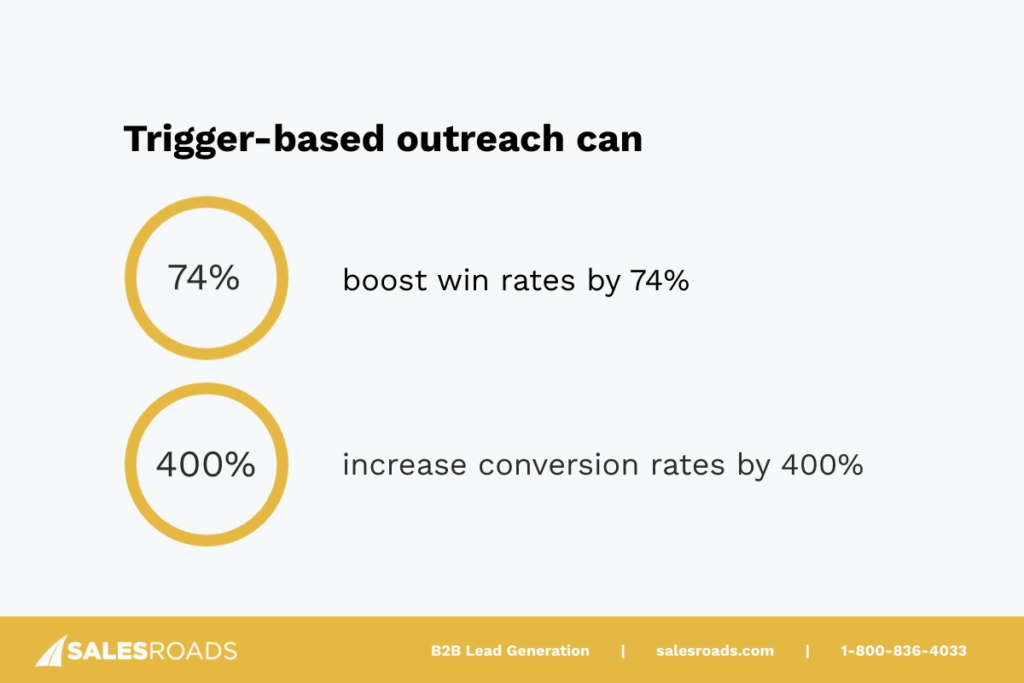
Using behavioral data also improves relevance. If a prospect just downloaded a whitepaper on compliance, your follow-up should tie directly to that interest.
Trigger-based timing ensures your messages land when the pain point is top of mind, making them feel timely and human at scale.
Common Pitfalls That Break Authenticity in Mass Outreach
Scaling outreach is hard enough, but most teams shoot themselves in the foot by leaning too heavily on shortcuts. Authenticity gets lost when automation replaces thought, when data is misused, or when reps don’t bother to refine what actually works.
You need to avoid these common traps that erode trust and kill response rates to make personalized sales outreach land at scale.
Overreliance on Automation Without Custom Logic
Automation is powerful, but without logic behind it, it’s just noise. Too many SDRs load prospects into a generic sequence and hope something sticks. That’s not outreach; it’s spam with a name field.
The better approach is to design rules that inject relevance at scale.
For example, branching sequences by persona, tailoring cadences based on buying stage, or adjusting messaging by industry. Outreach at scale tips always emphasize efficiency, but efficiency without context backfires.
Smart automation should make your message sharper, not lazier. The goal is to let software handle delivery while reps focus on the insights that make messages resonate.
Using Irrelevant Data That Breaks Trust
Bad data doesn’t just lower response rates; it damages credibility. Mentioning a prospect’s outdated title, congratulating them on a promotion from two years ago, or referencing the wrong industry makes your outreach feel careless.
Prospects quickly tune out when they see you don’t understand who they are or what they care about. Data hygiene is the baseline, but the bigger step is making sure the insights you use are relevant.
For example, referencing a recent funding round is valuable; referencing their college sports team is not. Personalized sales outreach is only effective when the data points connect back to a real business problem. Every detail you use should earn its place in the message.
Lack of A/B Testing to Identify Authentic Tone and Messaging
Too many teams stick with the same outreach scripts for months without asking if they still work. Outreach at scale demands constant testing.
A/B testing isn’t just about subject lines; it’s about tone, structure, and even CTA style. Some audiences respond better to direct asks, while others engage more with curiosity-driven approaches.
Without testing, reps assume their messaging is authentic when it might be missing the mark. The best sales orgs run continuous experiments to find the balance between personalization and scale. By testing variations, you discover which phrases feel natural to buyers and which sound automated.
Over time, this builds a library of proven frameworks reps can rely on for authentic outreach at volume.
Bottom Line
Don’t chase personalization for the sake of looking clever. Chase it for the sake of being useful.
Every line you write or every call you make should earn its place by helping a buyer connect their current reality to a better outcome you can deliver.
If your outreach makes them feel understood and respected, you’ve already separated yourself from the noise.
Scale is important, but trust is what opens doors. Build for both.


